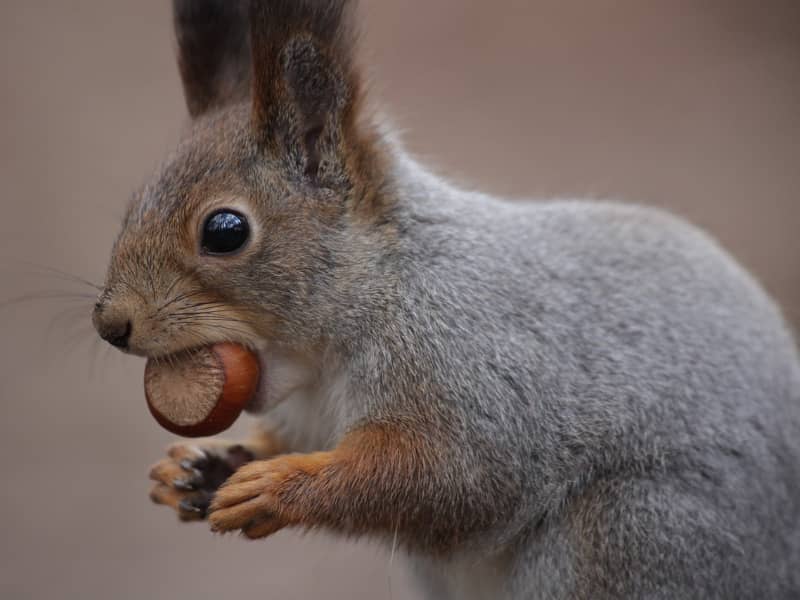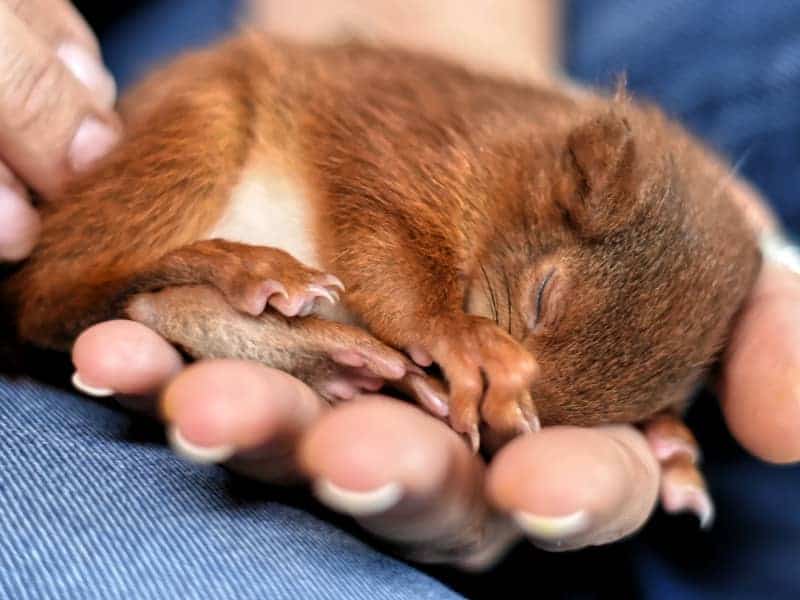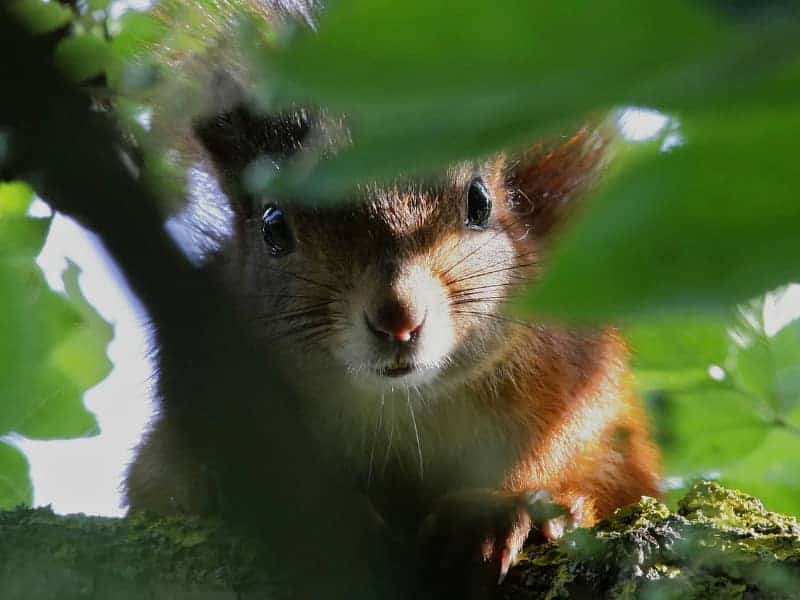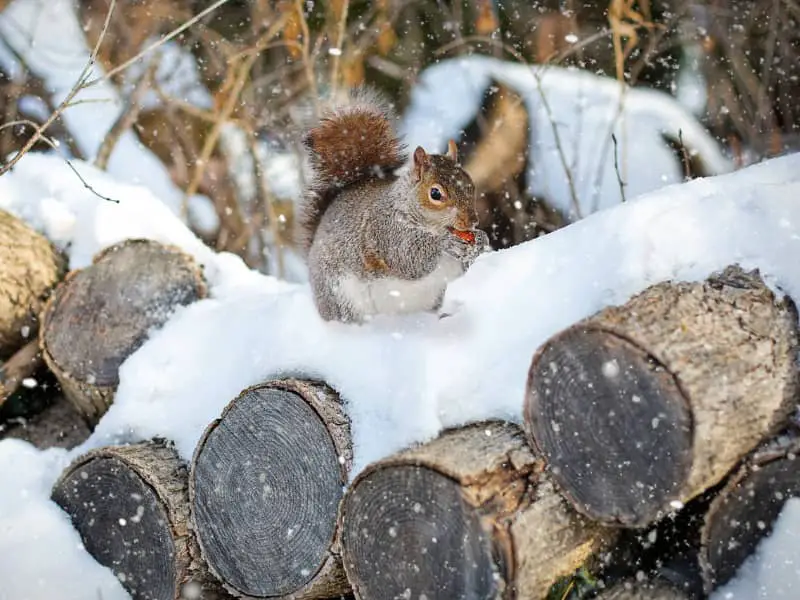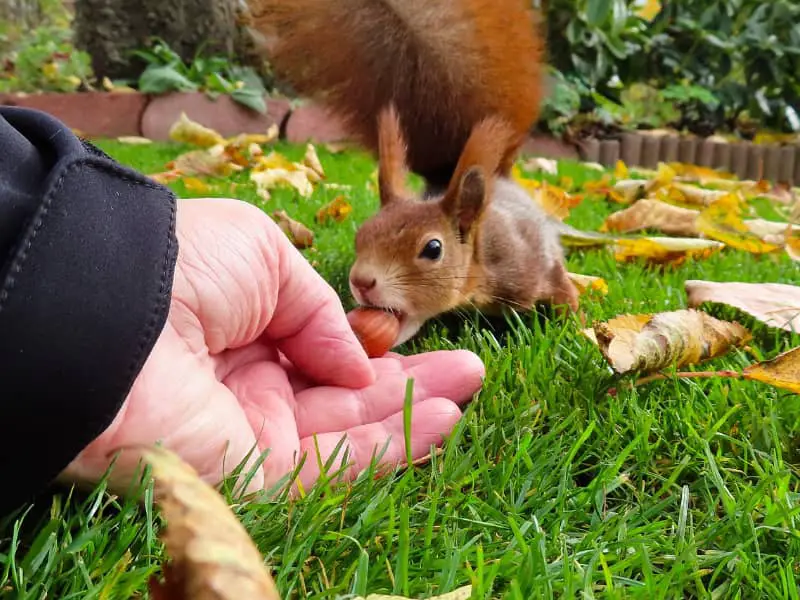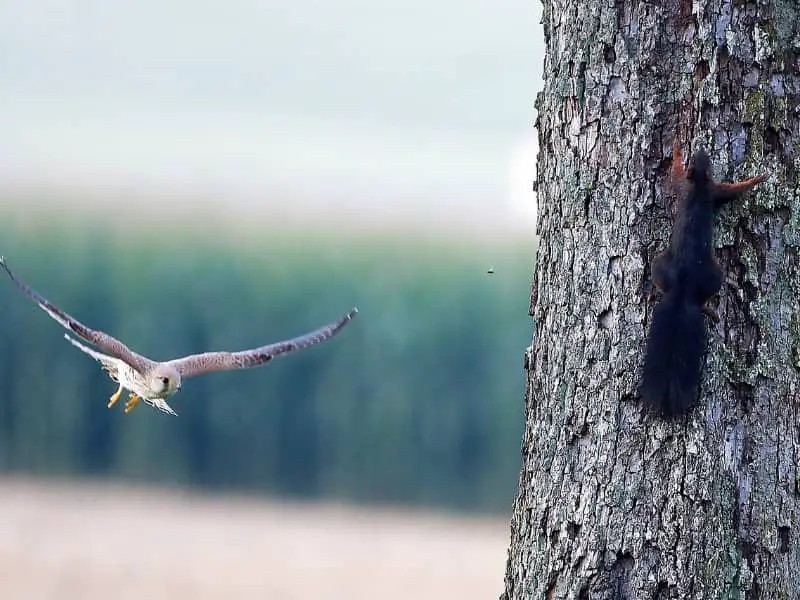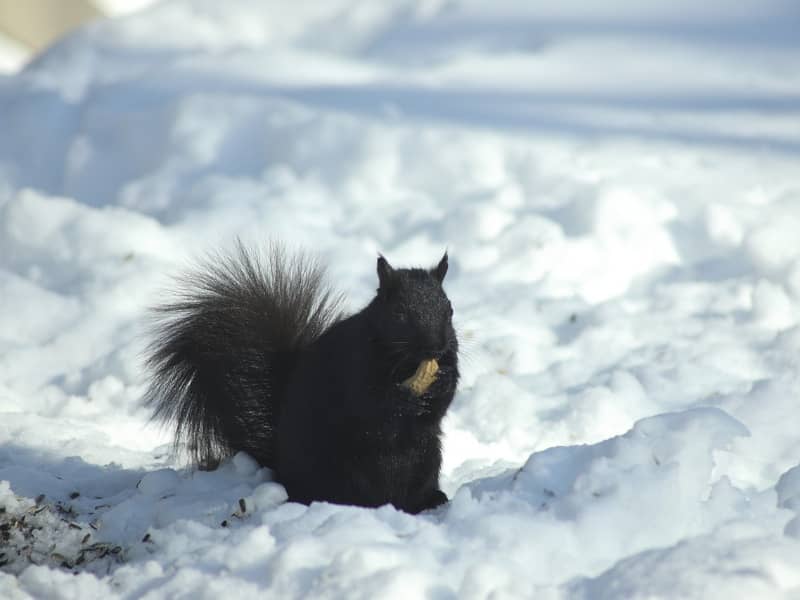
Black squirrels
The black squirrel is often considered the evil congener of the well-known red-brown rodents. You have spotted such a squirrel in your garden and would like to learn more about this variety. Below we would like to tell you more about the black rodents.
Black squirrels - native animal in the garden
The black squirrel also becomes particularly active in late summer. It gathers supplies and hides them. It flits from tree to tree or through the bushes. You've often seen a shadow chasing through the trees, but you couldn't quite place the animal. It was definitely not the familiar red-brown rodent.
However, the native Eurasian squirrel (Sciurus vulgaris) does not always have to be red in color. The most diverse color combinations come into play here. So it can be that you see beside the red animals also red-brown, red-grey, brown-grey or even black squirrels. However, all animals have one thing in common - their white belly.
In winter, the fur of many squirrels is not only shorter, but also denser and thicker. It has a very high gray content, which is why many think that this is an imported gray squirrel.
We are talking about the American gray squirrel (Sciurus carolinensis). These animals do not exist in Germany. So far you can find them only in Italy and Great Britain. But you probably won't have to wait much longer until you can admire the gray squirrel in your garden. The way across the border to Switzerland is relatively easy for the animals. However, experts are asking themselves whether the animals survive the winter in the Alps.
What makes the gray squirrel so dangerous?
The gray squirrel is not only heavier and larger, but also more aggressive than our native squirrels. When it comes to food, it is less choosy than the native animals. It finds stores of other squirrels, plunders them or eats unripe acorns. It is also much more active in winter. All this means that it will soon completely replace our European squirrel. This can be proven by studies from England.
But the gray squirrels are also a problem because of another thing. They transmit the parapox virus (squirrelpox virus). We are talking about the squirrel pox. The immigrants from America do not get sick from it. However, an infected European squirrel dies within 1- 2 weeks.
Perfect climbers, the squirrels
Squirrels, no matter what color, perfectly adapted to life in the woods. Thanks to their long hind legs with strong muscles, they can not only climb nimbly, but also jump. With the long fingers and their toes, as well as sharp claws, they always find a secure grip even on smooth tree trunks and the like. The bushy tail with a length of 15 to 20 cm is almost as long as the trunk of the animal. The tail also serves as a balancing aid or as a kind of rudder when jumping.
Differences European squirrel and American gray squirrel
There are a few distinctive details with which you can distinguish our European squirrel, also called the black squirrel, from the American gray squirrel.
| American grey squirrel | European squirrel | |
| Ears | no brush ears | typical tufts of hair at the tips of the ears |
| Belly | indistinctly colored white | pure white colored and sharply defined |
| typical coat coloration | gray to ocher | maroon to reddish brown |
| Color variants | light silver-gray, dark black-gray, very rarely reddish | red brown, red gray, brown gray, black |
| Tail | with white edges | without white edges |
| Physique | plump, short neck, prominent skull | petite, long neck, narrow skull |
What does the black squirrel eat?
The diet of the black squirrel is very diverse. These include:
- Hazelnuts
- Walnuts
- Swiss pine nuts
- Sunflower seeds
- Pumpkin seeds
- Corn kernels
- Apples
- Pears
- Grapes
- Raisins
- Cucumbers
- Broccoli
- Carrots
How can you support the black squirrel?
At the current time, our native squirrels do not have to fear competition from American gray squirrels.
If you find a black squirrel in winter, do not chase it away. Support it in its search for food so that it survives the winter well.
Especially pregnant animals have a high food demand. The gestation period of rodents begins in January, so you can already provide food for the animals at the end of the year.
Author

-
Garden animal - A life with nature
Welcome to my animal blog! My name is Dirk and I am happy to take you on my journey through the fascinating world of animals and gardening.
Born 54 years ago, I have had an insatiable curiosity for the animal world around me since childhood. Although I have moved professionally in other industries, my true passion has always been animals and nature. It is remarkable how a small garden has become such an important part of my life.
Many of my fondest memories are associated with the animals that share our home. Whether it's the curious squirrels that scurry across the trees in the morning, the colorful variety of birds that visit our feeders, or the busy bees and butterflies that pollinate our flowers, every moment with them is invaluable to me.
This blog is my contribution to share my experiences, discoveries and insights with like-minded people. Here I will share stories of unforgettable encounters with animals, give tips on gardening and creating wildlife-friendly habitats, and take you on my journeys through nature.
Thank you so much for being here!
Cordial,
Dirk aka garden animal
Last posts
- 27. February 2024PetsVeganes Hundefutter – Grün und Gesund?
- 18. January 2024ChickensOregano für Hühner
- November 27, 2023HamsterDiurnal hamsters
- November 24, 2023HamsterHamster hammock

